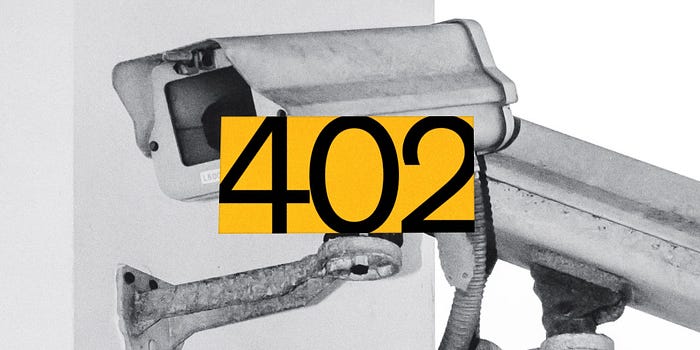How AI can adapt to Indigenous knowledge
How to change minds + hunting with care (Issue #402)

AI presents itself as universal, yet it’s built on datasets, languages, and values rooted in specific cultural worldviews. Indigenous lawyer argues that AI extends the reach of colonial control into the digital age. Tools like drones, facial recognition, and predictive policing are already used to monitor Indigenous communities, often misidentifying people and reinforcing existing biases. Large language and vision models amplify harm by scraping Indigenous languages, cultural practices, and images from the web without permission or context, in turn creating a “stereotyped, mish-mash of Indigenous cultural elements.”
Palmater emphasizes that these harms are not inevitable and can be addressed through Indigenous-led governance that centers sovereignty and accountability. She recommends measures such as Indigenous oversight with veto power, mandatory impact assessments before deploying AI systems, and mechanisms to ensure free, prior, and informed consent for any data involving Indigenous communities. These steps aim to protect Indigenous authority and community safety in the face of rapidly advancing AI technologies.
In addition to systemic reform, individual users can also push back. UN researcher Cornelia C. Walther developed what she calls the “A-Armor Defense System” for users to identify harmful biases in AI:
- Assumptions: What worldview is baked into this AI? Does it assume Indigenous peoples exist only in the past?
- Alternatives: Before accepting AI answers about Indigenous topics, seek out Indigenous-created sources.
- Authority: Who designed this system, and were Indigenous communities consulted or excluded?
- Accuracy: When AI describes colonization as “settlement,” cross-reference with Indigenous scholars.
- Agenda: Who benefits from this framing? When AI presents Indigenous land as “empty wilderness,” whose interests does that serve?
Thankfully, Indigenous communities are already taking the lead in shaping AI on their own terms. In British Columbia, the FLAIR initiative preserves over 200 Indigenous languages. In New Zealand, a speech recognition system reaches 92% accuracy for the Indigenous language of te reo Māori. These language efforts are critical given that typical LLMs represent only about 1.4% of the world’s languages. Moreover, Australia’s CultureQ platform safeguards cultural data, while Canada’s $22M Abundant Intelligences project explores AI through Indigenous knowledge systems.
These projects don’t ask how to adapt to AI; they ask how AI can adapt to Indigenous knowledge. calls this approach a “synthetic third term”: a space where two seemingly opposed systems — traditional knowledge and digital technology — interact to produce something new. In practice, this means AI tools can be designed to strengthen and sustain Indigenous culture rather than extract or replace it.
—
Recommended reading:
- When you say the wrong thing, how do you fix it? When told a client that “gifted” was outdated terminology for neurodivergence, the client felt dismissed because she’d identified as “gifted” her whole life. Stewart responded by owning the impact of her words, asking curious questions about how they landed, and showing compassion for both herself and her client. She concludes that trust grows through repair, not perfection.
- At the end of his life, ’s father kept seeing a little boy sitting beside the road through the window. Cranford couldn’t see anyone. Weeks later, she realized the boy was her father as a child, appearing to himself at the end of his life. “Could it be possible that as we approach the hairpin curve of death,” she asks, “the later years of our lives somehow fold over and come so close to the past that we might observe a glimpse of our younger selves?”
- Hunting your own food changes your relationship with eating meat. writes about learning to fish and hunt in her Indigenous Alaskan community, where careful butchering becomes a form of respect. She contrasts buying meat at the store — “transactional and neat” — with hunting, which brings abundance: the labor, the emotion, more fish than their cabin can hold.
- In Ursula K. Le Guin’s Earthsea series, characters have secret “true names” that reveal their essence and must choose carefully when to reveal them. found this deeply resonant when she came out as trans and chose her own name. “We choose to reveal our true names (and our true identity) to everyone, rather than just a trusted few,” she writes. “We are in effect trusting the world with our truth.”
A quote with a dose of practical wisdom:
“I was interested in what you’re saying. Can you tell me more about how come you think that?”
Changing someone’s mind starts with curiosity, not facts. Citing Stanford research, explains that this simple question makes people more open to considering new perspectives instead of digging in defensively.
We want your feedback!
Thank you for being a Medium Newsletter reader. We want to hear your ideas and feedback! Please help us shape the future of our newsletter by taking a few minutes and sharing your thoughts in our survey.
Deepen your understanding every day with the Medium Newsletter. Sign up here.
Edited and produced by &
Like what you see in this newsletter but not already a Medium member? Read without limits or ads, fund great writers, and join a community that believes in human storytelling.
Listen To The Article

Black Friday 30%
Offer









